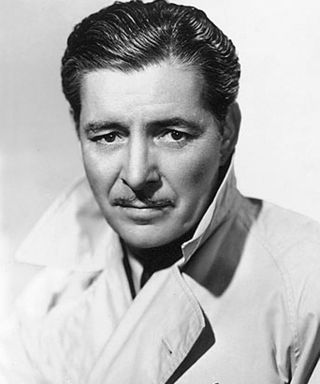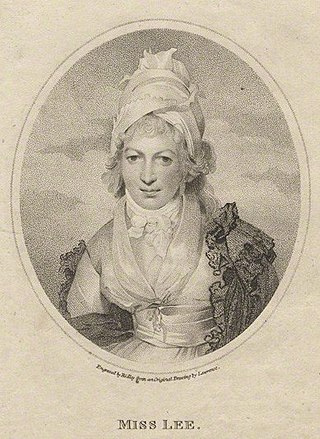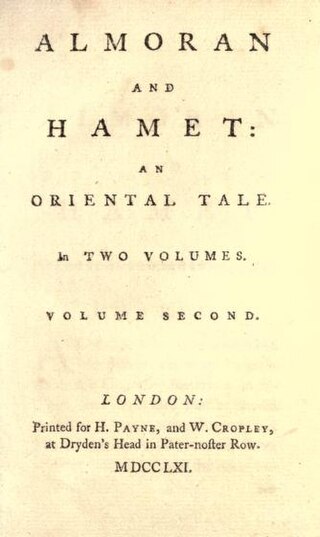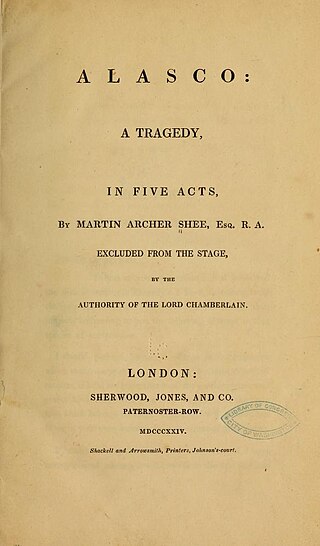
Jane Austen was an English novelist known primarily for her six novels, which implicitly interpret, critique, and comment upon the British landed gentry at the end of the 18th century. Austen's plots often explore the dependence of women on marriage for the pursuit of favourable social standing and economic security. Her works are an implicit critique of the novels of sensibility of the second half of the 18th century and are part of the transition to 19th-century literary realism. Her deft use of social commentary, realism and biting irony have earned her acclaim among critics and scholars.

Ronald Charles Colman was an English-born actor, starting his career in theatre and silent film in his native country, then immigrating to the United States and having a highly successful Hollywood film career. He starred in silent films and successfully transitioned to sound, aided by a distinctive, pleasing voice. He was most popular during the 1920s, 1930s and 1940s. He received Oscar nominations for Bulldog Drummond (1929), Condemned (1929) and Random Harvest (1942). Colman starred in several classic films, including A Tale of Two Cities (1935), Lost Horizon (1937) and The Prisoner of Zenda (1937). He also played the starring role in the Technicolor classic Kismet (1944), with Marlene Dietrich, which was nominated for four Academy Awards. In 1947, he won an Academy Award for Best Actor and Golden Globe Award for Best Actor for the film A Double Life.

George Colman, known as "the Younger", was an English dramatist and miscellaneous writer. He was the son of George Colman the Elder.

George Colman was an English dramatist and essayist, usually called "the Elder", and sometimes "George the First", to distinguish him from his son, George Colman the Younger. He also owned a theatre.

Tobias George Smollett was a Scottish novelist, surgeon, critic and playwright. He was best known for picaresque novels such as The Adventures of Roderick Random (1748), The Adventures of Peregrine Pickle (1751) and The Expedition of Humphry Clinker (1771), which influenced later novelists, including Charles Dickens. His novels were liberally altered by contemporary printers; an authoritative edition of each was edited by Dr O. M. Brack Jr and others.
This article contains information about the literary events and publications of 1761.
This article contains information about the literary events and publications of 1696.

Louis-François Roubiliac was a French sculptor who worked in England. One of the four most prominent sculptors in London working in the rococo style, he was described by Margaret Whinney as "probably the most accomplished sculptor ever to work in England".

Sophia Lee was an English novelist, dramatist and educator. She was a formative writer of Gothic fiction.
The 1768 British general election returned members to serve in the House of Commons of the 13th Parliament of Great Britain to be held, after the merger of the Parliament of England and the Parliament of Scotland in 1707.
English literature is literature written in the English language from the United Kingdom, its Crown Dependencies and Overseas Territories, the Republic of Ireland, the United States, and the countries of the former British Empire. The English language has developed over the course of more than 1,400 years. The earliest forms of English, a set of Anglo-Frisian dialects brought to Great Britain by Anglo-Saxon invaders in the fifth century, are called Old English. Beowulf is the most famous work in Old English, and has achieved national epic status in England, despite being set in Scandinavia. However, following the Norman conquest of England in 1066, the written form of the Anglo-Saxon language became less common. Under the influence of the new aristocracy, French became the standard language of courts, parliament, and polite society. The English spoken after the Normans came is known as Middle English. This form of English lasted until the 1470s, when the Chancery Standard, a London-based form of English, became widespread. Geoffrey Chaucer (1343–1400), author of The Canterbury Tales, was a significant figure in the development of the legitimacy of vernacular Middle English at a time when the dominant literary languages in England were still French and Latin. The invention of the printing press by Johannes Gutenberg in 1439 also helped to standardise the language, as did the King James Bible (1611), and the Great Vowel Shift.
The Rodiad is a pornographic poem on the subject of flagellation published by John Camden Hotten in 1871, although falsely dated to 1810. It was falsely ascribed when printed to George Colman the Younger. Its author was Richard Monckton Milnes. Henderson places it in The Library Illustrative of Social Progress published around 1872 but it is not in the list of Henry Spencer Ashbee.

Polly Honeycombe is a 1760 afterpiece farce by George Colman the Elder. It comically deals with the effect of novel-reading on not only young women, but on various members of polite 18th-century English society. It was Colman's first play and helped establish his reputation, which he built on with The Jealous Wife the following year.
The Brothers is a 1769 comedy play by Richard Cumberland. The play was Cumberland's breakthrough work. Its complicated plot involved a villain with a virtuous young brother and was set partly in Cornwall. Two years later Cumberland went on to write his most successful work The West Indian.

The novel in Scotland includes all long prose fiction published in Scotland and by Scottish authors since the development of the literary format in the eighteenth century. The novel was soon a major element of Scottish literary and critical life. Tobias Smollett's picaresque novels, such as The Adventures of Roderick Random and The Adventures of Peregrine Pickle mean that he is often seen as Scotland's first novelist. Other Scots who contributed to the development of the novel in the eighteenth century include Henry Mackenzie and John Moore.

Scottish literature in the eighteenth century is literature written in Scotland or by Scottish writers in the eighteenth century. It includes literature written in English, Scottish Gaelic and Scots, in forms including poetry, drama and novels. After the Union in 1707 Scottish literature developed a distinct national identity. Allan Ramsay led a "vernacular revival", the trend for pastoral poetry and developed the Habbie stanza. He was part of a community of poets working in Scots and English who included William Hamilton of Gilbertfield, Robert Crawford, Alexander Ross, William Hamilton of Bangour, Alison Rutherford Cockburn, and James Thomson. The eighteenth century was also a period of innovation in Gaelic vernacular poetry. Major figures included Rob Donn Mackay, Donnchadh Bàn Mac an t-Saoir, Uillean Ross and Alasdair mac Mhaighstir Alasdair, who helped inspire a new form of nature poetry. James Macpherson was the first Scottish poet to gain an international reputation, claiming to have found poetry written by Ossian. Robert Burns is widely regarded as the national poet.
The New Cambridge History of India is a major multi-volume work of historical scholarship published by Cambridge University Press. It replaced The Cambridge History of India published between 1922 and 1937.
William Colman, D.D. was a priest and academic in the second half of the eighteenth century.

Almoran and Hamet is a 1761 novel by the British writer John Hawkesworth, published in two volumes. Inspired by the style Samuel Johnson's Rasselas it ran through six editions by 1796. Following the death of their father, two brother battle for the Persian throne.

Alasco is an 1824 tragedy by Martin Archer Shee, the Irish painter and future President of the Royal Academy. While best known for his artworks Archer Shee also wrote poetry, two novels and this play. It was intended to be staged at the Theatre Royal, Covent Garden in London, but objections by the censor George Colman to the play's subject matter led to the Lord Chamberlain, the Scottish peer the Duke of Montrose to refuse it a license. Montrose and Colman were wary of any plays they regarded as touching on any revolutionary themes. Archer Shee published the work with a lengthy preface defending the play, and it was performed at the unlicensed Surrey Theatre south of the River Thames in April 1824.












